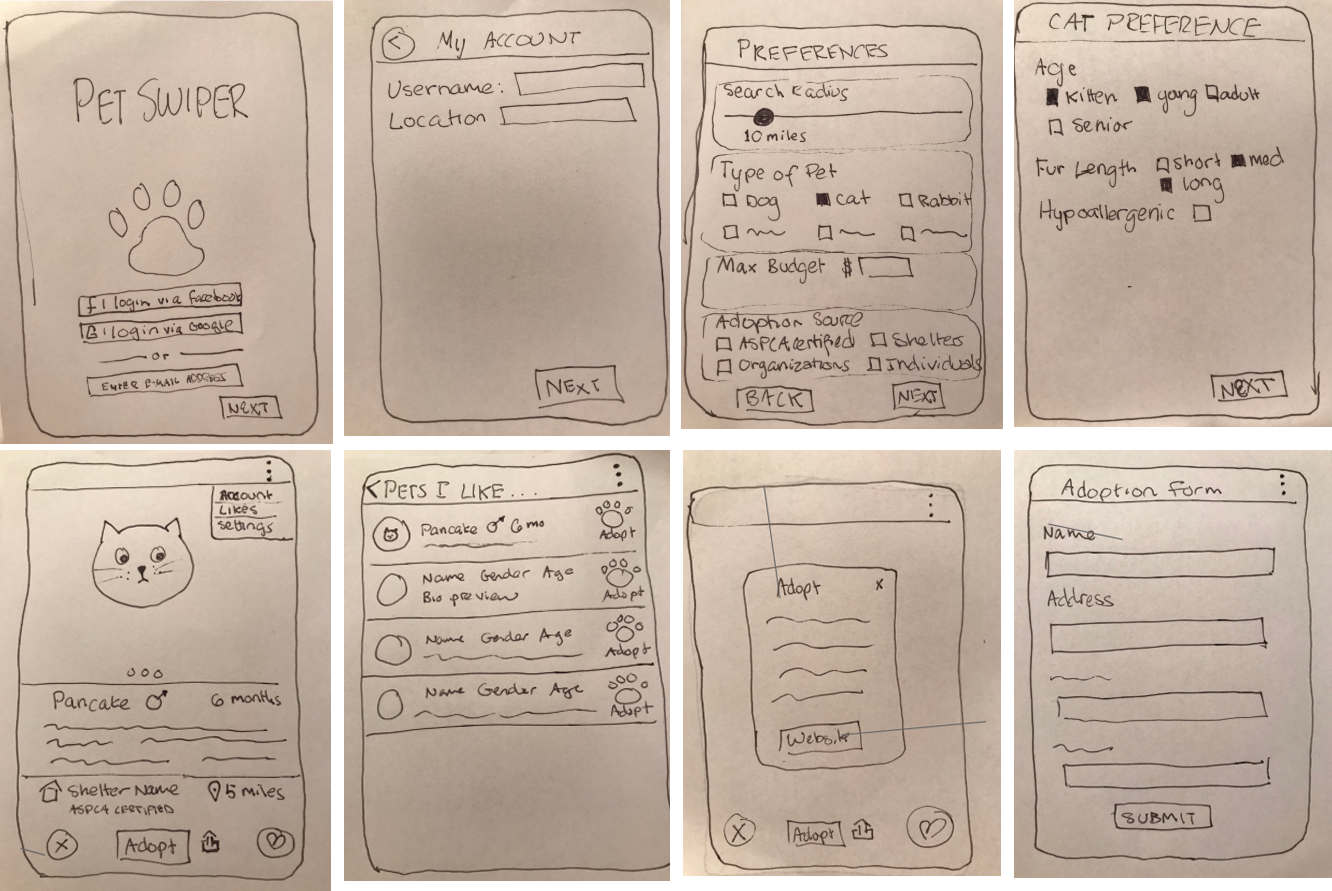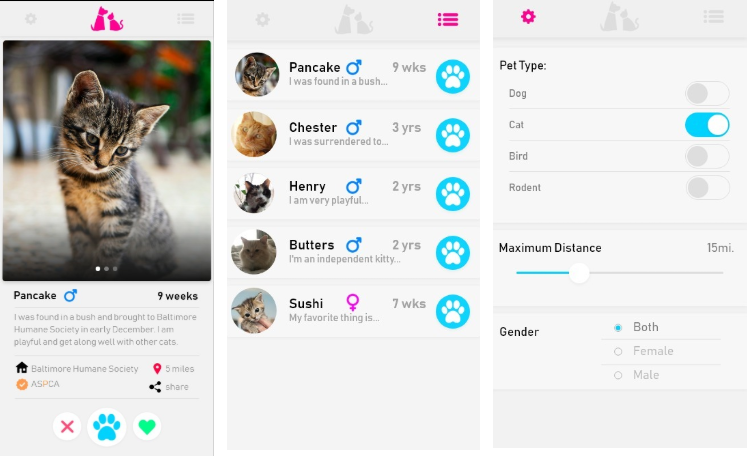Pet adoption
side Quest
objective
Hep make it easier for people to adopt a pet
description
During the time of our research, 6.5 million companion animals were arriving at community animal shelters nationwide each year and about 3.2 million shelter animals were adopted. We thought it would be important to explore the reasons why people choose to adopt, learn about breakdowns in the process, and what factors guide their decision making when adopting their new furry friend.
party size
4 members
Duration
3 months
Role
User Researcher
Rewards
+2,500 xp
+1 Research plan
+3 User research
+2 Contextual inquiry
+1 product design
How we started
This one of our first projects as human-computer interaction master's students at the University of Maryland, College Park as we began learning about the contextual design method. We began by layout out our project focus where we set our goals, what activities we were to observe in the field, and identify our target users. Background research was really useful in giving us a better sense of the current problem space. Through our research we wanted to get a holistic understanding of the adoption process from what motivates people to adopt, how they select a shelter, to which pet they bring home.
We recruited 12 participants who had recently adopted a pet or were looking to adopt and conducted contextual inquiries with them. Most accounts were retrospective and we asked them to walk us through their process they best they could, bringing in artifacts when possible. In one case we were able to follow along to a trip to a shelter as they were still in the browsing phase of their adoption journey. The pets that were looked at during this study were dogs, cats, and rabbits.
Getting user insights
Interpretation sessions were held after each interview as the team collected insights that would help us build our affinity diagram and experience models. Extracting insights from recent interviews is important so we can retain as much rich detail as possible while it's still fresh in our minds. We decided it would be important to build a sequence and decision point model to best track breakdowns in the adoption process and major influences in the decision making process.
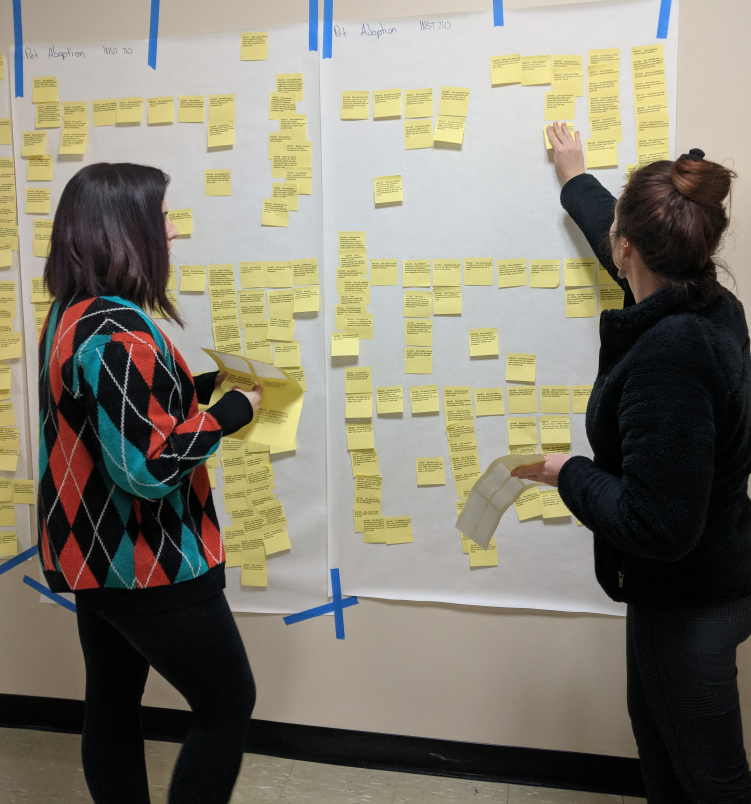
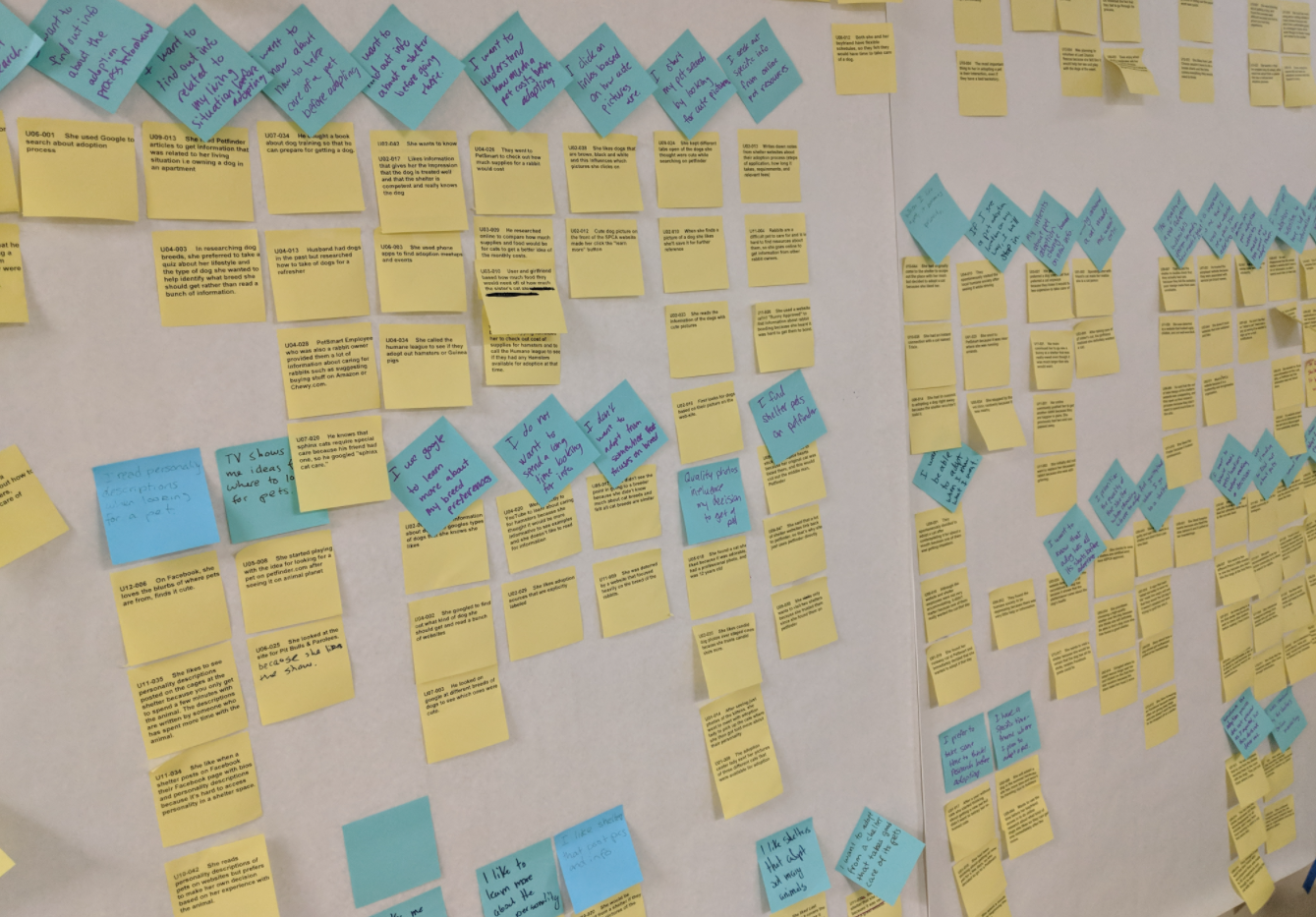
Affinity Diagram
Building an affinity diagram helped immerse us in the user data. The diagram is built bottom-up, starting with user data and then clustered into larger categories to allow the data to tell us the story of our users. Yellow notes hold various insights collected from interviews and then are grouped under blue labels in the form of user statements such as "I like to learn more about the pet's personality".
Overtime we build up this hierarchy of data with pink and green notes. Greens are the highest level and describe a whole area of concern while below that are the pinks which help describe specific issues. In the end the wall tells the team a story about the user group we interviewed and we can make design decision driven by the data.
Major Findings
Our data suggested 5 main topics of concern. Here I'll break down one of our green sticky notes. The green note was "factors that influence my decision" and below are the pink notes that formed from our data
- My past experiences with pets influence me when I'm adopting a new pet
- I care about the past of the animal I'm adopting
- Media influences me during the adoption process
- I take into consideration the people I live with when getting a pet
- The place I live in limits me when getting a pet
- People around me play a role in my adoption process
- Before adopting, I want to know what the pet is really like
We were able to take these points into consideration as a team and extract the design impacts. From a design perspective this data suggests there should be more information about an animals past and personality and a way to easily share information with multiple stakeholders. We did this for each of the green sticky notes.
Creating concepts
When we finished building our affinity diagram and experience models the team walked the wall and identified positives, negatives, and design ideas found within the data that would help drive our design. It helped focus our interest when creating a collective list of issues and hot ideas that will inspire our visioning session. During visioning the team went through a process of storytelling that leaves little room for judgement or evaluation of ideas. Here we came up with various ideas and possibilities that could aide our users during the pet adoption process.
We explored ideas for a shelter critic, a pet recommender process, and a pet information hub platform. One idea we chose to pursue for this project was a pet swiper app that would help people browse through various pets, including plenty of photos and personality descriptions. It would allow them to share easily with others the pets they like and get input. Additionally it would provide easy access to shelter ratings and adoption process information.
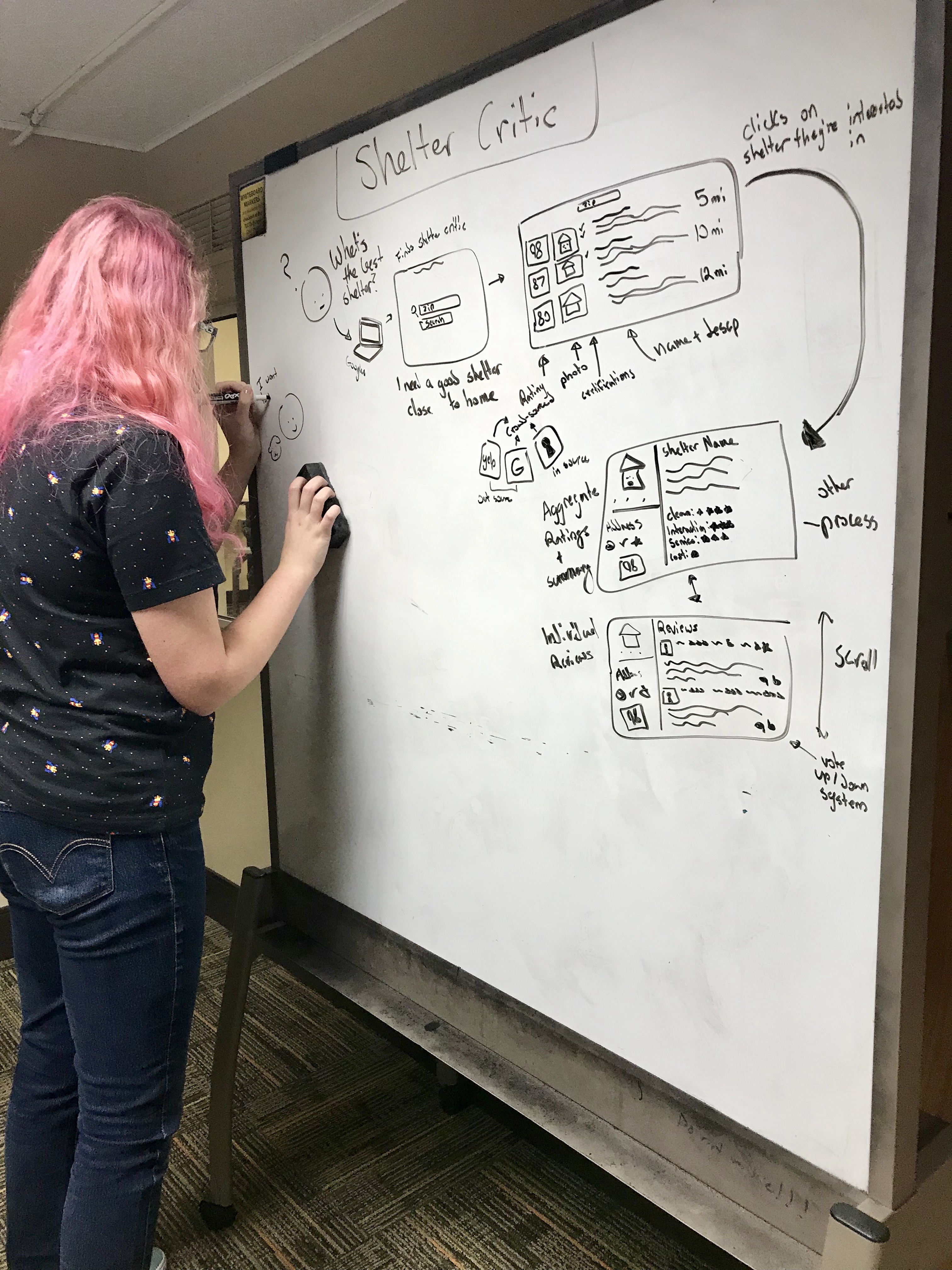
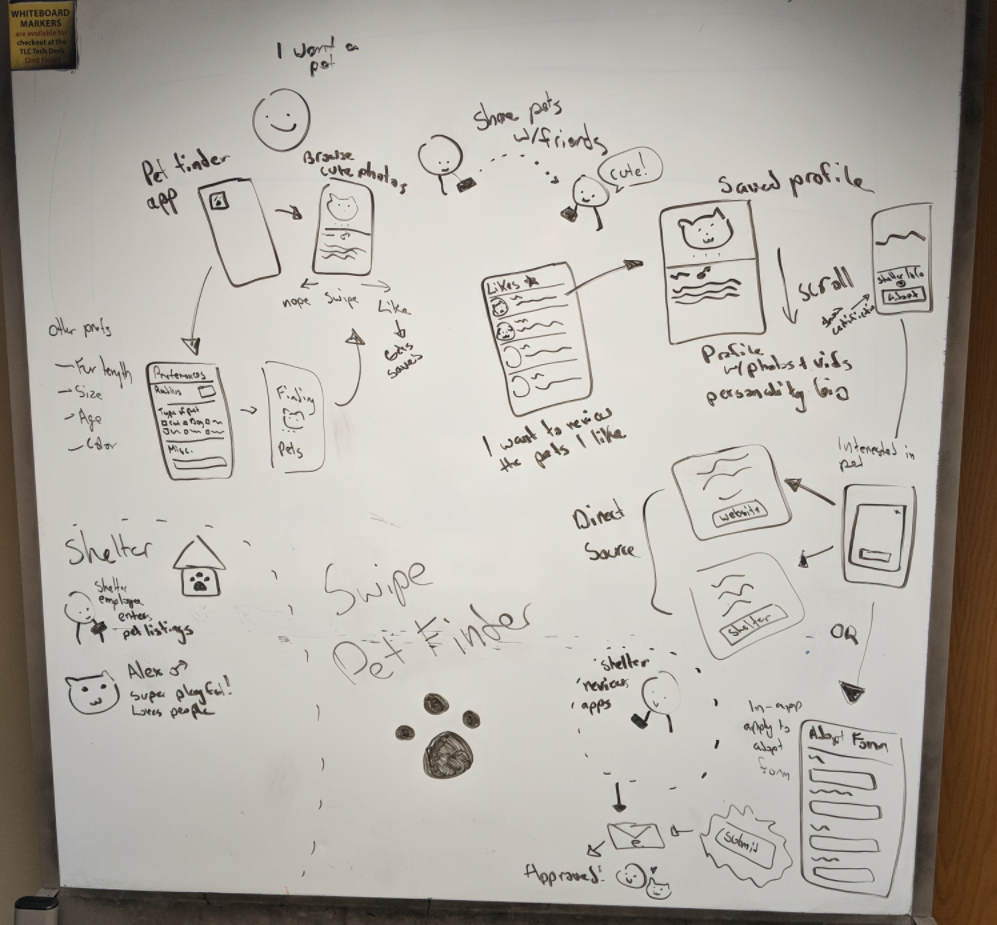
Quick Prototypes and wrap up
Visions helped us get a sense of what features we would want to include in a product concept. We started out by sketching some initial screen mockups on paper which later were mocked up digitally for our final class presentation. This course was mainly focused on research methods so this is as far as the team got. Overall we were able to conduct contextual inquiries with target users, interpret user data, and come up with creative solutions based on user needs.
